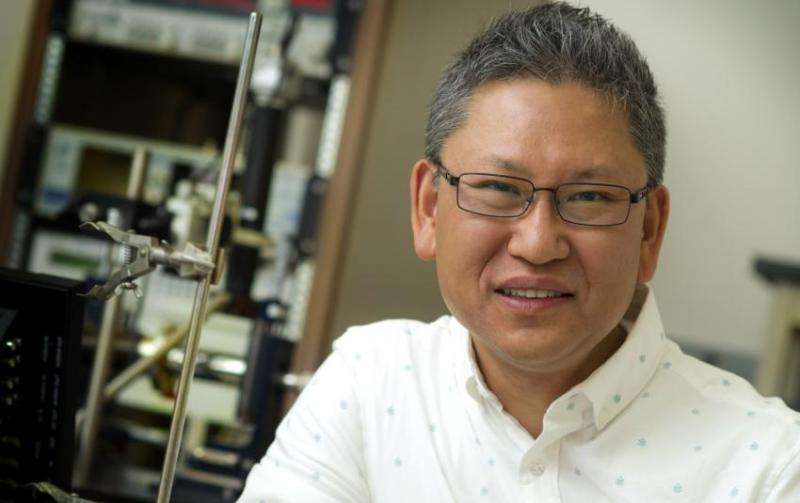Nanopillar fabrication to lead to more efficient electronics

A University of Texas at Arlington engineering researcher will build nanoscale pillars that will lead to more energy-efficient transistors in electronic devices and gadgets.
Seong Jin Koh, an associate professor in the Materials Science & Engineering Department, has received a $300,000 National Science Foundation grant that could lead to a tenfold reduction in energy consumption of smart phones, laptops and tablets, which could result in an identical reduction in the frequency of battery charging for those devices.
"The key is that all transistor components reside in a single nanopillar and that electrons flow through it without being heated," said Koh, who added that a nanopillar is less than 50 nanometers in diameter. A human hair is about 100,000 nanometers thick. "This research will allow transistors to consume less energy and generate less heat. That greatly affects how well the transistors perform."
Khosrow Behbehani, dean of the College of Engineering, said other sectors besides individual electronic component users stand to benefit too.
"Soldiers who carry electronic gear on their missions could certainly lighten their load," Behbehani said. "Creating these new energy-saving technologies have truly positive effect on the world."
The NSF grant is a continuation of Koh's work for the last five years. Koh's team detailed its research in "Energy-filtered cold electron transport at room temperature," which was published in Nature Communications in September 2014.
Koh and the team discovered a way to cool electrons to -228 °C without external means and at room temperature, an advancement that could enable electronic devices to function with very little energy. The process involves passing electrons through a quantum well to cool them and keep them from heating.
"As the nanopillars are arranged vertically, extremely large number of transistors can be put on a small chip, but still function with very little energy", said Koh.
Journal information: Nature Communications
Provided by University of Texas at Arlington




















